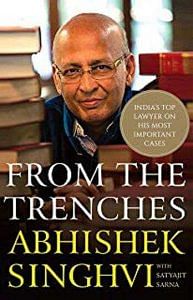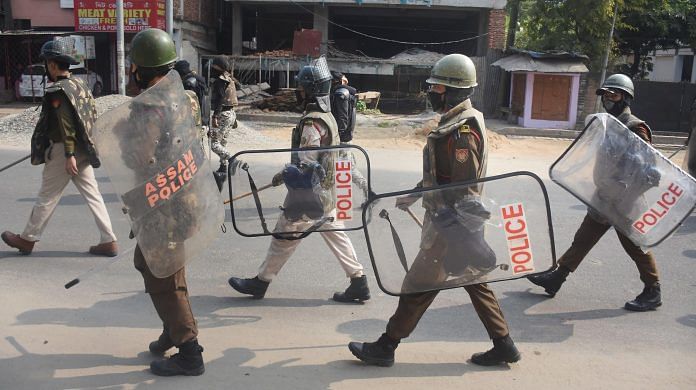Imagine this: tonight, as you are having dinner with your family, there is a knock on the door. Two policemen enter and say you have to go with them. You go out of the door and are handcuffed, put into a police van and taken to the police station through the back entrance. You are taken to the basement and locked in a dark room. After eight hours, a man comes in and asks you about a conspiracy to assassinate the prime minister. You say you have never heard of such a thing.
Then, two constables tie you to a wall and beat you with sticks and electrocute you and ask you questions. You are untied and a piece of paper is put before you. You are told to sign it, and to avoid any further beatings, you sign it. Two days later, you are produced in a court, and you find that you have confessed to a conspiracy to murder the prime minister. Your signed confession is shown to you, and weapons mentioned in your confession are placed before you. Where do you start to protest your innocence?
For most of human history, throughout the twentieth century and even today, this nightmarish scenario has been completely possible. It is one of the oldest questions about law enforcement. As the Roman poet Juvenal asked in the second century ad, Quis custodiet ispo custodies? or Who will watch the watchmen? We all know the police exists to protect us from criminals and illegal activity, for example, violence. But what does one do when the violent criminal, the kidnapper, the murderer in some cases, is the policeman himself?
….
Also read: Under political pressure or a scapegoat? Where Delhi Police chief Amulya Patnaik went wrong
If you enter a police station anywhere in India, you will notice one thing – a (more or less) prominently displayed set of guidelines of an accused person’s rights in case of arrest. This is one of the major legacies of D.K. Basu v. State of West Bengal, the Supreme Court’s landmark judgement against illegal and arbitrary arrests and custodial violence.
When the case began in 1986, I was a raw junior, who had been enrolled for only five years, but had practised much less since I had also been completing my PhD at Trinity College, Cambridge. Needless to say, experience is highly valued in the practice of law. With time comes a deeper knowledge of the law as well as an ability to read the court – to anticipate the thoughts of the judge and to approach his or her apprehensions with care and sensitivity. Litigation depends very much on the human touch, a judge’s perception of a matter and of counsel.
The matter came up for the first time before Justice O. Chinnappa Reddy. I had earlier done a case before him for a poor man, Teja Singh, a former public servant, who was fighting the Union Territory of Chandigarh because he had been dispossessed of his house. He was an elderly, visibly ailing man, whose wife was also in poor health. I was representing him pro bono.
The Court ultimately could not give Teja Singh relief but there was genuine sympathy for his position, and they heard his case extensively. Justice Chinnappa Reddy heard me patiently even though he couldn’t give me relief. This is probably why he thought of me when he read D.K. Basu’s letter.
Also read: Who is to blame for CAA violence: Delhi Police or politics of Modi government?
D.K. Basu himself was a retired judge of the Calcutta High Court. He had seen articles about custodial torture and deaths in the news. He addressed a letter to the Chief Justice of India, enclosing a number of articles about separate incidents, and asked why these violations of the law were being tolerated.
That letter was converted into a public interest litigation by the Supreme Court – in the law this has subsequently been called epistolary jurisdiction, a cause taken up by the court on the basis of a letter received by it. Epistolary jurisdiction is an excellent example of how wide the powers of the Supreme Court can be when it sees the need for it to exercise its jurisdiction.
Justice Chinnappa Reddy was very passionate about physical liberty, and he took an immediate interest in the matter. He appointed me amicus curiae, a legal term meaning ‘friend of the court’. The appointment of an amicus curiae is a time-honoured practice where, when a problem requires research or impartial thinking and inputs, an advocate is appointed by the Court to look at the issue and address it without representing either side. At that nascent stage of my career, it was a great honour to be so appointed.
The issue of illegal arrests and custodial violence was a pan-India problem, and needed to be addressed by all twenty-five (at that time) states. The successive benches took interest in the matter, but there was very little meaningful progress for almost ten years. The delays were a result of the scale of the matter – since every state was a party, replies and data needed to be filed by each state.
Every time an application was moved, it would take nearly a year to ensure that all the parties, the respondent states, had been served and had filed their necessary responses. There would only be three or four hearings a year. As a junior lawyer, I couldn’t force the pace much. We did a lot of hard work to glean data from the states, to prepare questionnaires and seek answers.
Also read: Indian police academies need an upgrade, must go beyond old drill-based training
States were naturally reluctant to reveal bad truths about themselves, and dragged their feet as much as possible. The Court tried novel methods like confining hearings to only five states at a time, but the problem of unmanageability was unavoidable.
The state governments raised a few main arguments:
(a) They argued that the law already covers the violations raised. They pointed to the Code of Criminal Procedure which contains a number of safeguards; for example, enquiries had to be made into any allegations of custodial violence, and police who exceeded their mandate were to be punished.
The problem was that there were only two solutions for dealing with errant police officers – either to charge them with the crimes of assault or murder, or to initiate a disciplinary enquiry. From our data we had found that dismissals of policemen were very rare. What normally followed was a suspension. Almost never was there actual legal prosecution, which should follow as an automatic consequence. The more pertinent question was, what good did any of these remedies do to the victim?
(b) The second argument was that greater safeguards would lead to lawlessness as it would restrict meaningful investigation by the police.
This is what we call a scarecrow argument – it looks scary and important but there is no substance to it. In no way are investigations hampered by safeguards against illegal arrest or custodial violence. The law supports extensive investigation and interrogation and preventive detention if necessary. But the law does not permit torture or ‘third degree methods’. The answer to terrorism cannot be state terrorism.
(c) The third argument was that these safeguards are informally implemented in any case, and no orders were needed. This argument should not prevent the Court from laying down minimum mandatory standards to ensure that the same standards are applied everywhere. Furthermore, the victims of such violations should be able to point to their rights in law and seek recourse if necessary.
Luckily, the case came to Justice A.S. Anand. Justice A.S. Anand was relatively more centrist than Justice Chinnappa Reddy, but he too was very keen on physical liberties. He breathed new life into the matter. By that time I was a senior advocate, and had been one since 1993, and could urge the matter more forcefully.
I told the Court that my problem was not in conceptualizing safeguards to apply after arrest. I gave the Court an extensive catalogue of existing safeguards and fresh safeguards we could apply. The difficulty was that in practice the police were routinely picking up people, beating or torturing them to extract information or to ensure compliance, and formally arresting them only later.
Also read: Can changes in British-era IPC alter police attitude towards people or more reforms needed?
Since the formalities of arrest, paperwork and notifying the next of kin were only being done a few days later, none of the legal safeguards would apply till such time as arrest is formally recorded. In some circumstances, the victims of such mistreatment were even being medically treated before arrest. Therefore, at the time that you are produced before the magistrate, in accordance with the law, no mistreatment is taking place. Even now there is no real answer to this question.
On my recommendations, the Court laid down a set of procedural safeguards to be followed by all police forces across India and effectively made them law. In fact, by subsequent amendments to the Code of Criminal Procedure, 1973, these have come into legislation as well.
The idea of these directions was to prevent the pitiable situation where the police would pick up a suspect and do what they wanted with him, with nobody knowing where he had been taken, whose custody he was in, whether some kind of writ had been filed, or who the relevant officers were. The police could no longer weaponize their silence.
 This excerpt from ‘From The Trenches’ by Abhishek Singhvi with Satyajit Sarna has been published with permission from Juggernaut Books.
This excerpt from ‘From The Trenches’ by Abhishek Singhvi with Satyajit Sarna has been published with permission from Juggernaut Books.




This is a self congratulatory article that paints a totally one sided picture. He paints a picture of somebody being arrested, handcuffed, taken to a basement, tortured and forced to confess. Another more common picture is a criminal being arrested, released on bail and then the case goes into limbo for 20 years. By the time the case is heard, the witnesses are missing or dead, the investigators have retired and the criminal walks free. This is the reality that is repeated over and over. Even if somebody is convicted, endless appeals each lasting years ensure that nobody is ever punished. It is people like this author, who have over time, destroyed the legal system. The system we have today is a grotesque representation of a justice system where criminals are never punished, where the police have been handcuffed, justice is never delivered, and lawyers congratulate themselves for having created it.
Congress inpower for70years could not bring police reforms has no right to talk on such issues of human rights Let themselves go through the hell then they will realise.
Moot point is who will watch politicians.